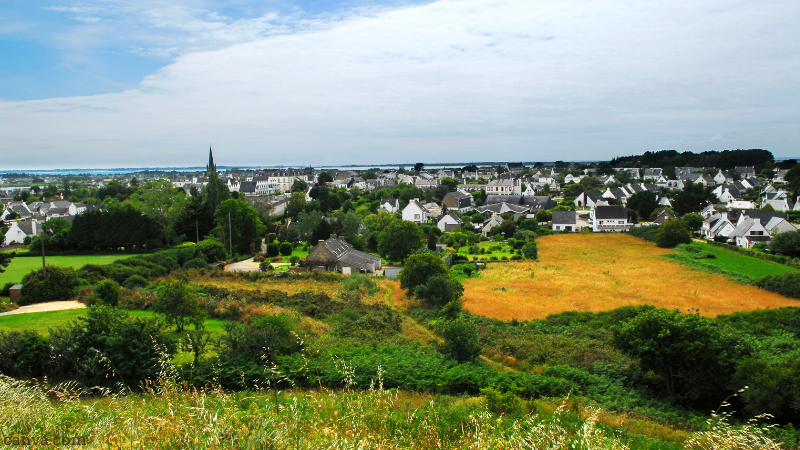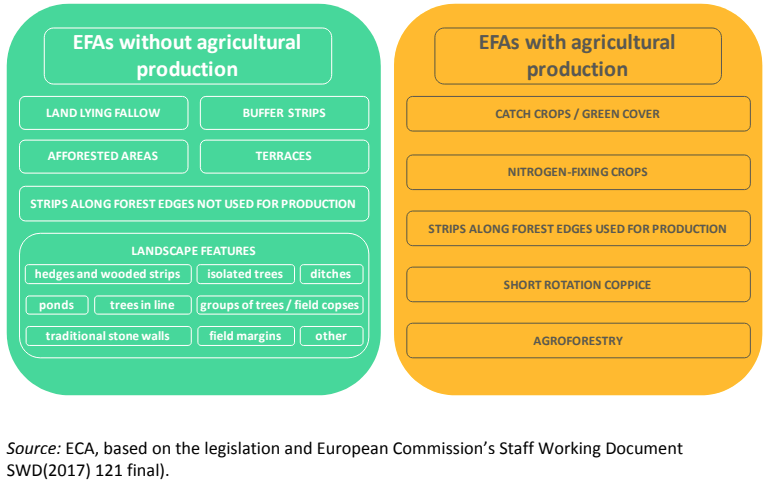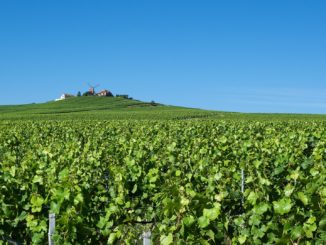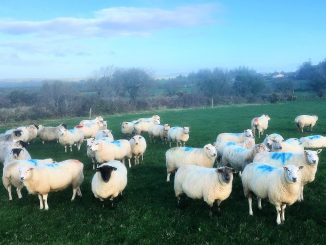
Ahead of tomorrow’s vote on the Nature Restoration Law at the Environment Committee in the European Parliament, the European Agroforestry Federation (EURAF) is calling for amendments to the proposal. In this exclusive Op-Ed for ARC, Gerry Lawson flags the proposal’s confusing choice of terminology which, he argues, fails to reflect the complex role of trees on farmland.
Replacing the bizarre concept of “Non-Productive Trees” with “Working Trees”
What’s in a name? Many of us were astonished when the Biodiversity Strategy 2030 came up with the weird term “non-productive trees” in the context of 10% space for nature:
“To provide space for wild animals, plants, pollinators and natural pest regulators, there is an urgent need to bring back at least 10% of agricultural area under high-diversity landscape features. These include, inter alia, buffer strips, rotational or non-rotational fallow land, hedges, non-productive trees, terrace walls, and ponds”.
In horticulture a non-productive tree is a fruit tree which is not bearing fruit, but that wasn’t what the Commission intended! Surely, a farmer with a tree in his fields or hedgerows wants to be able to cut lower branches for firewood and to be allowed (under licence) to fell mature trees for timber, as long as they are accompanied by appropriate and well-tended replanting. Trees outside the forest are productive. They are working trees which produce food, fuel, fodder, fibre, carbon, shade, shelter, nutrient-filtration and biodiversity. They don’t just look pretty.

The term “non-productive tree” in the Biodiversity Strategy and the Nature Restoration Law (NRL) seems to have been fallout from the saga of the Greening Regulation in the last CAP. The Commission reviewed early implementation of this in 2016 and concluded that more than 73% of the Ecological Focus Areas (EFA) selected by farmers, from the options enabled by Member States, could be classified as “productive”, with a preponderance of nitrogen-fixing crops (45.4 %) and catch crops (27.7 %). There was also a good amount also of “non-productive” fallow land (21.2 %), but poor use of landscape features (4.3 %) or buffer strips (less than 1 %). The European Court of Auditors and other authors indicated that these “productive” activities gave negligible benefit for biodiversity, and sometimes led to an intensification of agriculture.
The Court of Auditors also published a categorisation of “non-productive and productive” Ecological Focus Areas (EFAs) (below) which put the tree components of landscape features (hedgerows, lines of trees, isolated trees, groups of trees) into the “non-productive” box, but perhaps failed to emphasise sufficiently that this was only in the context of “agricultural production”.

CAP Strategic Plan Regulation
Fast forward to the present CAP Strategic Plan Regulation, which was adopted by the Commission in June 2018, and contained in Annex 3 (“Rules of Conditionality”) a new GAEC titled “Minimum share of agricultural area devoted to non-productive features or areas”. This was the only mention of the term “non-productive areas and features” in the whole of the draft regulation. [Note: This was GAEC9 at the time but was renumbered when GAEC5 (Farm Sustainability Tool for Nutrients) was removed.]
However, by the time the regulation had two years of consideration in Parliament, and in trialogue, and was published as Regulation 2021/2115, a couple of additional mentions of “non-productive” had appeared, but with subtly different wording:
-
Article 4 – Definitions and conditions to be provided in CAP Strategic Plans. Where Section 4(b)(ii) included the following under the definition of “eligible hectare”: “[…] any area of the holding which is […] used to attain the minimum share of arable land devoted to non-productive areas and features”. This Article also makes it clear that “[…] ‘eligible hectare’ may contain other landscape features, provided they are not predominant and do not significantly hamper the performance of the agricultural activity due to the area they occupy on the agricultural parcel […].”
-
Article 31 – Schemes for the climate, environment and animal welfare. Where Section Section 4(e) uses different wording: “protection of biodiversity, conservation or restoration of habitats or species, including maintenance and creation of landscape features or non-productive areas”.
The Article 31 approach includes “non productive areas” (e.g. fallow land) but makes no stipulation that landscape features should be non-productive. The wording of CAP Strategic Plan Implementing Regulation, section 3.1(e)(viii), reinforces this interpretation:
-
“an indication of landscape features and non-productive areas from the following indicative list: land lying fallow, hedgerows, individual or groups of trees, trees rows, field margins, patches, buffer strips, ditches, streams, small ponds, small wetlands, stonewalls, cairns, terraces, cultural features, other;
-
“for each type of landscape feature and non-productive area selected by Member States among the ones of the indicative list under the second indent of this point, an indication of the minimum size and weighting factors or conversion factors used for the calculation of the minimum share of landscape features and non-productive areas in arable land according to their contribution to the biodiversity objective, where applicable;”
Similarly, the wording of the PMEF Fiches for Result Indicators and Impact Indicators do not include the word “non-productive”:
-
R.34 Preserving Landscape Features (Share of utilised agricultural area (UAA) under supported commitments for managing landscape features, including hedgerows and trees)
-
I.21 Share of agricultural land covered with landscape features. For data-sources this fiche mentions LPIS/IACS, Copernicus and LUCAS data sources – none of which can possibly make a distinction between “productive trees” and “non-productive trees” – even if anyone understood what that means.
Nature Restoration Law
Which brings us to the hotly debated Nature Restoration Law. Recital 52 of the proposal adopted by the Commission, and Annex IV, confirms that “productive trees which are part of arable land can be considered part of high diversity landscape features”. But what on earth happened to productive trees on grassland? EURAF circulated a number of suggestions in June 2022 to COMENVI and COMAGRI to revise this wording, but it seems unchanged in the latest draft from COMENVI, and in the compromise wording suggested by the Swedish Presidency.
It is important that this wording is clarified, and also that it is made clear that there is NO DIFFERENCE between the “High Diversity Landscape Features” discussed in the NRL and the “Landscape Features” already legislated for in the CAP Strategic Plan Regulation, and its Implementing Regulation – as discussed above. Both are to be measured with exactly the same Impact Indicator (I.21).
It’s too late to change the multiple occurrences of “high diversity landscape features” in the NRL to plain old “landscape features”, but a clarification amendment is suggested in the Box below. EURAF is also concerned that Annex IV of the NRL proposes to use exclusively an indicator called LUCAS to measure landscape features. LUCAS is a sampling framework where each point represents approximately 4 km2. The method used to validate landscape features in the previous CAP was the Land Parcel Identification System (IACS/LPIS) of Member States, using orthophotos at a pixel resolution of 40 cm. Replacing this with LUCAS is setting the clock back 20 years.
EURAF’s Policy Briefing #18 suggested six changes to the wording of the NRL, but there are two priorities (see box below).
Requested amendments to the Nature Restoration Law in Plenary (or before!)
|
More on agroforestry
Organics, Agroforestry, Eco-schemes – for a Just Transition in Ireland
Letter From The Farm | Three Years In: Realism And Planning For Utopia
Reforesting Portugal: Taking Communites From Extraction to Regeneration
Scotland | Organic Farming, Agroforestry Best for Emissions Reductions
More on Nature Restoration Law
Big Step Forward for Nature Restoration Law – Council of Ministers Agrees its Position
Nature Restoration Law avoids rejection in Parliament’s Environment Committee – what’s next?
Nature Restoration Law | No, 10% of land will NOT be abandoned under NRL
Rewetting Survives, Natura 2000 areas ringfenced in Environment Committee Text
EPP Attacks Pesticide Regulation & the Nature Restoration Law
Nature Restoration Law: A Chance for the EU to Make Good on the Green Deal





